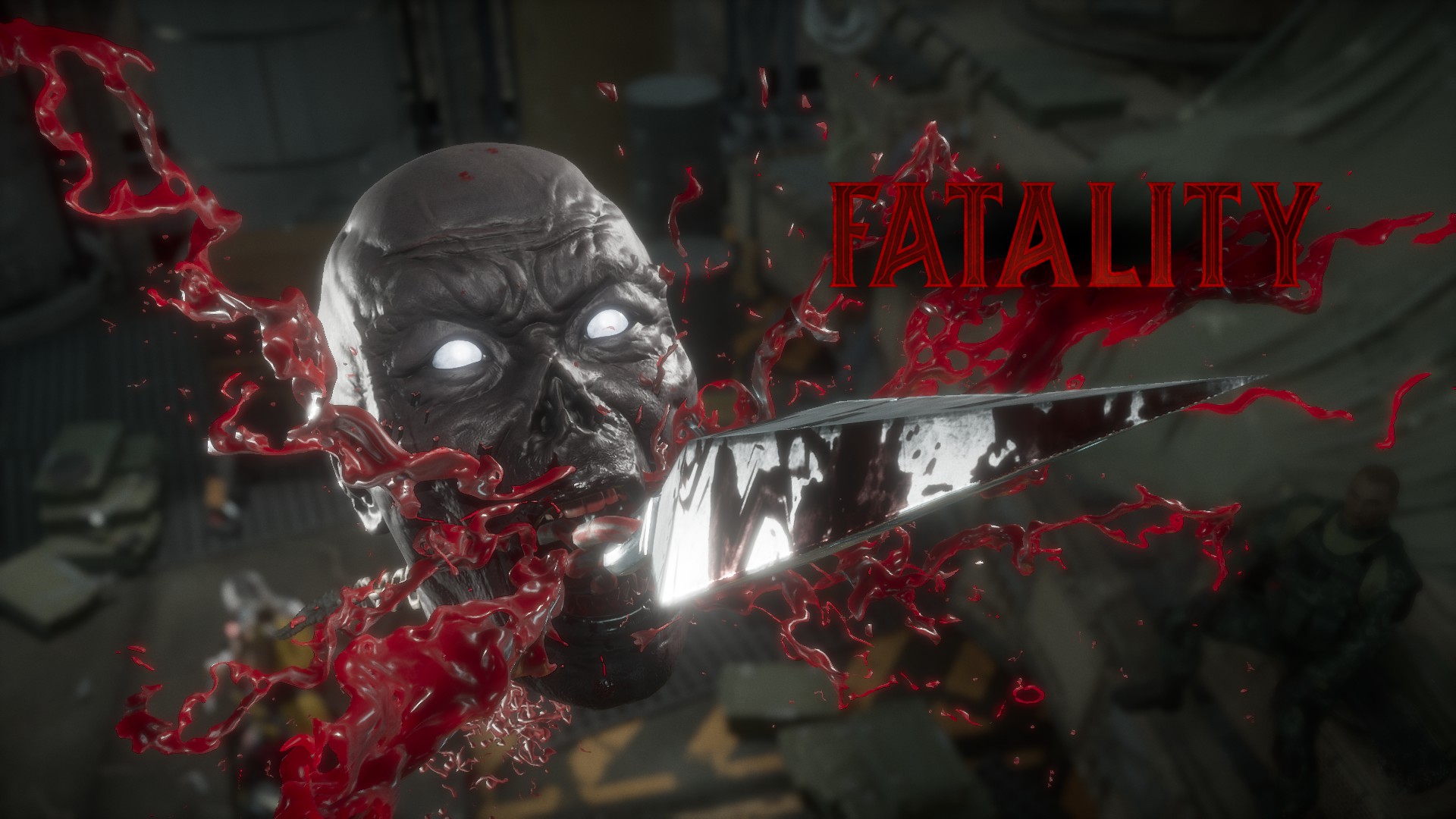Our Verdict
A deep, customisable fighter that just happens to include the best video game movie never made.
PC Gamer's got your back
What is it? Infinity War with cyber ninjas and deadly hats
Expect to pay: $59.99 / £49.99
Developer: NetherRealm
Publisher: Warner Bros
Reviewed on: Intel Core i7-7700 CUP @ 3.60GHz, 16 GB RAM, NVIDIA GeForce GTX 1070, Windows 10
Multiplayer? 1-2
Link: Official site
It might seem like lunacy to begin a Mortal Kombat review by praising the game’s subtlety. You’ve already watched videos of eyeballs being plopped out of heads and spines being crushed like biscuits. But there’s a moment, early in the game’s fantastic story mode, which encapsulates how the series has evolved. Reunited, Kitana and Liu Kang share a hug. Liu goes to embrace her—but he can’t. He’s too awkward, she’s too important. It tells you everything about their relationship without a single word being spoken.
Right now, 13-year-old me is being mime-sick. Subtlety? Hugs? Relationships? Get out. But the good news, theoretical past self, is that the stuff that defines Mortal Kombat is also here in gore-soaked, self-aware spades. The fighting is the best it's ever been. The fatalities are sickeningly inventive. There are enough unlockables to keep you busy for months. But it’s the story mode that stands out, stitching together 27 years of MK lore into something that resembles the best bits of a Marvel movie.
The new villain, Kronika, feels like Thanos and Galadriel's lovechild. Her plan is to rewrite time to prevent an authoritarian Raiden from upsetting the balance of the universe by beheading Shinnok. It’s an effective, morally-ambiguous setup, similar to what NetherRealm did with Injustice. The temporal gymnastics also mean that classic versions of the game’s heroes return, alongside the revenant versions seen in MK X. It’s an absolute thrill for anyone who’s followed the series, and it’s a smart way of starting afresh. Some moments, such as Jax wrestling with his past as a revenant, are surprisingly poignant. Others, like Johnny Cage bickering with his younger self, are just plain funny. And because NetherRealm’s incredible facial tech can render emotional trauma as well as it can physical, there are moments of genuine pathos alongside the pathological violence. It’s the best story in a fighting game this side of Injustice 2.
None of this would matter if the fighting was guff. But this is as immediate, engaging, and rewarding as the series has ever been. It still has the same pick-up-and-play ease of previous MK games, but it’s easier than ever to drill into the specifics that make this a competitive fighter. Many elements of been refined. Instead of endless X-ray moves, we now have Fatal Blows—powerful one-shot attacks you use when your health is low. They can turn a losing round in your favour, but they can only be used once per match if they connect. Offensive and defensive meters have been separated, too. You now use the former to amplify certain attacks, making them more powerful or strategically advantageous. And the defensive meter can be spent on things like counterattacks and rolls that will get you out of the corner if pinned. And if this talk of meters and escape rolls has you worried, don’t be: the tutorials are excellent. In fact, if you’ve never played a fighting game, or you’ve dabbled but never learnt about stuff like frame data, MK 11 is absolutely the place to start. It’ll take you from your first jab right up to theoretical elements like zoning. It’s another touch that shows how far the series has come from its raw beginnings of spammed uppercuts and endless sweeps.
There’s a deep level of customisation for each fighter. Skins, gear, entrances, abilities, and even AI behaviour can all be tinkered with, using unlockables earned by playing the game or exploring the Krypt mode. The latter is a third person adventure in which your generic explorer plunders Shang Tsung’s island, knocking down crumbling walls and opening chests. Loot is randomised, but you can get some sense of what’ll you’ll get from how expensive each chest is. The third person implementation is fun—a throwback to Deception’s ridiculous Konquest mode—and it’s yet another excuse to immerse yourself in a bath of MK lore. But the randomisation means it’ll take you forever to unlock any specific stuff you want, and the cosmetic changes in MK 11 feel less rewarding than the gear grind Injustice 2.

While I was happy to spend entirely too long opening loot boxes to unlock the correct cudgel for Swamp Thing, I’m less enthusiastic about doing the same for a palette-swapped costume for Erron Black. Other decisions feel less wholesome. Time Crystals can be purchased with real money and used in the store to buy any of the five premium items on sale. You can also buy easy fatalities, which is a weird way to deal with what feels like an accessibility option. NetherRealm is promising to tweak the systems to reduce the grind, but a complete overhaul seems unlikely. Right now, there’s no way to buy everything you want with actual cash, even if you wanted to.
Finally, some good news for PC players. Mortal Kombat X was a great fighter that got a horrible port, but MK 11 feels like it’s been designed with us in mind. The autoconfigure tool didn’t work brilliantly for me, but I was able to run the game on max settings using a 1070 and get a consistent 55fps during fights. There are also some PC-specific features like integration with RGB displays—they’re little touches, obviously, but it’s enough to make PC players feel less like we’re the Hsu Hao of gaming platforms.
A deep, customisable fighter that just happens to include the best video game movie never made.


